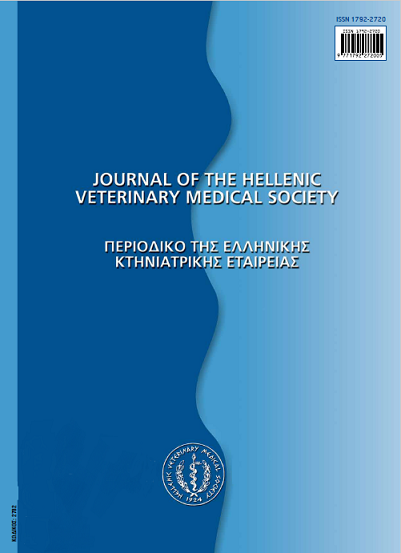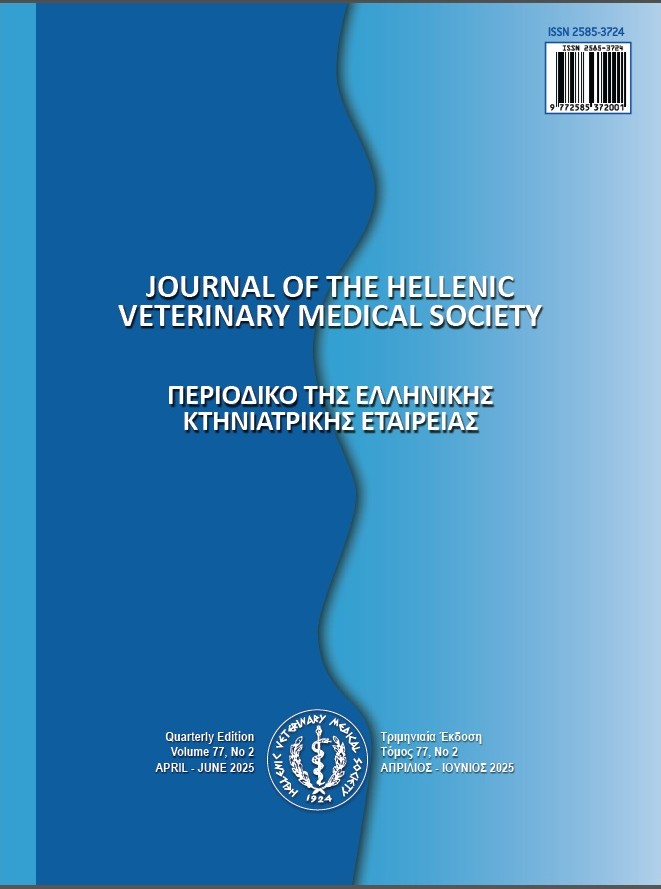Feline leishmaniosis due to Leishmania infantum (syn. L. chagasi)

Abstract
From the beginning of the 20th century, feline infections by at least eight different Leishmania species have been sporadically reported, worldwide. In the Mediterranean countries, feline infection imposed by L. infantum, the aetiological agent of canine leishmaniosis and human visceral and cutaneous leishmaniasis, is of particular importance, because cats may represent a "secondary reservoir" of the parasite in the nature. Although the prevalence of the infection may be as high as 60%, most infected cats are resistant and remain asymptomatic, while only occasionally, they may present cutaneous and/or ocular lesions, and perhaps systemic clinical signs. In feline leishmaniosis, ulcers and nodules, usually localized at mucocutaneous junctions, planum nasale, face and ear pinnae, constitute the mainstream of cutaneous lesions. In a small number of cases, exfoliative dermatitis and pododermatitis have been noted, whereas a cause-and-effect relationship, between feline leishmaniosis and the presence of papules, crusts and generalized alopecia remains speculative. Ocular lesions, such as those associated with conjunctivitis, (ulcerative) keratitis, posterior or anterior uveitis, chorioretinitis and panopthalmitis are relatively common. The only systemic signs that have been constantly associated with feline leishmaniosis are peripheral lymphadenomegaly, splenomegaly, hepatomegaly and chronic nephritis that may lead to chronic renal failure. The most consistent laboratory abnormality is hyperglobulinaemia that is usually polyclonal. Feline leishmaniosis can co-exist with various other infectious and non-infectious diseases that may alter its clinical picture and/or influence the immunological response of the infected cat. Diagnosis is usually based on the results of cytology,
histopathology, immunohistochemistry, culture, serology and polymerase chain reaction (PCR). Apart from the advantages and limitations inherent to each of these methods, their diagnostic value depends on many factors, such as the biological sample being used, the reagents and the particular technique employed. Leishmania amastigotes can be detected by applying bone marrow, lymph node, spleen, cutaneous and ocular cytology, histopathology, and/or immunohistochemistry, which are 100% specific. Serology may underestimate or even overestimate the frequency of the infection in the endemic areas, depending on the methodology and the cut-off value, whereas PCR, that can be performed on the tissues mentioned before, plus the peripheral blood may be a better option for epidemiological studies. Although a uniformly effective treatment for symptomatic cats has not been established yet, long-term allopurinol administration, along with the management of any concurrent diseases, is the only treatment to suggest at moment.
Article Details
- How to Cite
-
CHATZIS, M., SARIDOMICHELAKIS, M., & KOUTINAS, A. (2018). Feline leishmaniosis due to Leishmania infantum (syn. L. chagasi). Journal of the Hellenic Veterinary Medical Society, 61(4), 359–369. https://doi.org/10.12681/jhvms.14908
- Issue
- Vol. 61 No. 4 (2010)
- Section
- Review Articles

This work is licensed under a Creative Commons Attribution-NonCommercial 4.0 International License.
Authors who publish with this journal agree to the following terms:
· Authors retain copyright and grant the journal right of first publication with the work simultaneously licensed under a Creative Commons Attribution Non-Commercial License that allows others to share the work with an acknowledgement of the work's authorship and initial publication in this journal.
· Authors are able to enter into separate, additional contractual arrangements for the non-exclusive distribution of the journal's published version of the work (e.g. post it to an institutional repository or publish it in a book), with an acknowledgement of its initial publication in this journal.
· Authors are permitted and encouraged to post their work online (preferably in institutional repositories or on their website) prior to and during the submission process, as it can lead to productive exchanges, as well as earlier and greater citation of published work.




